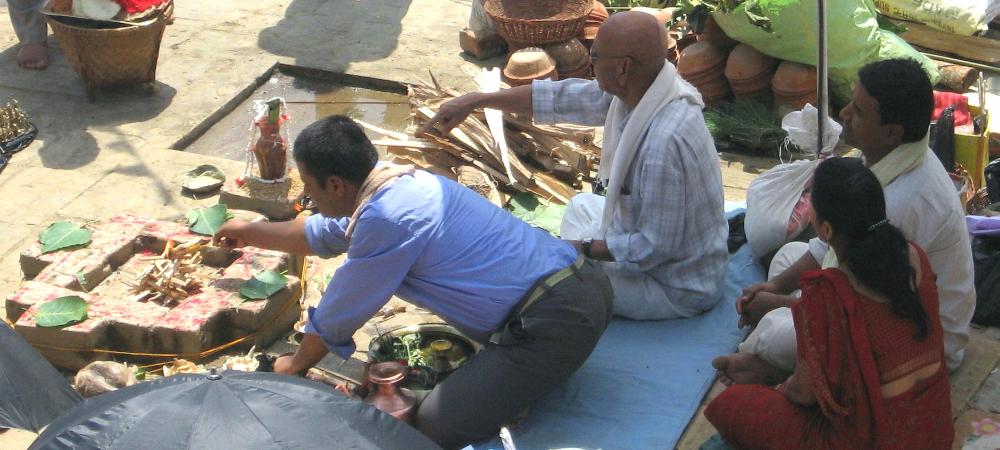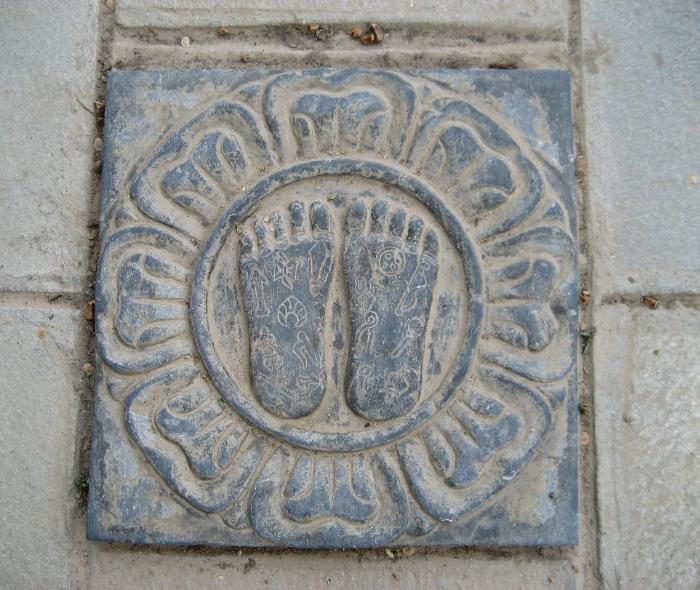
Where We Be
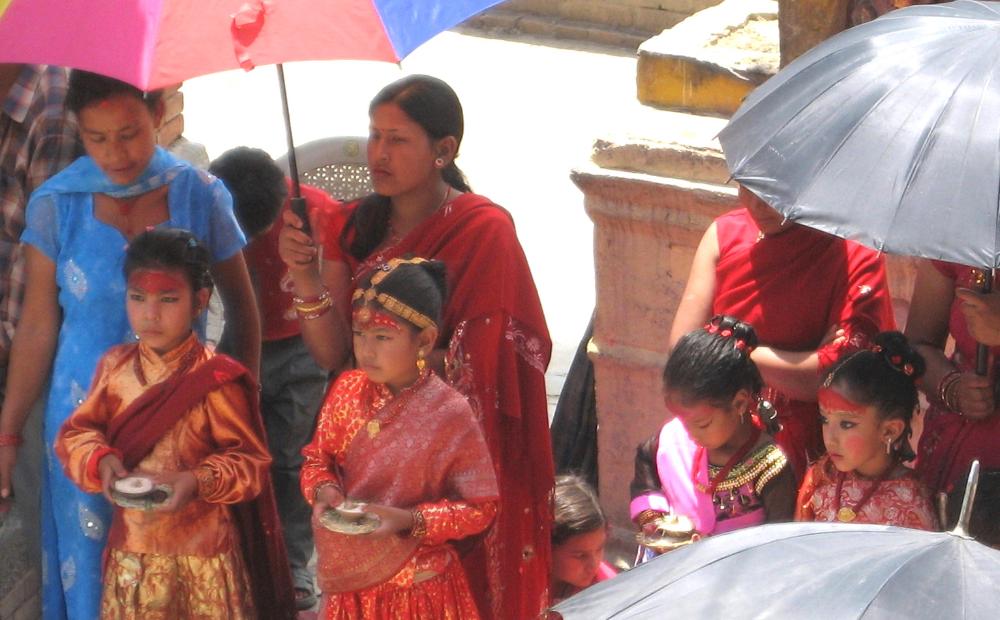
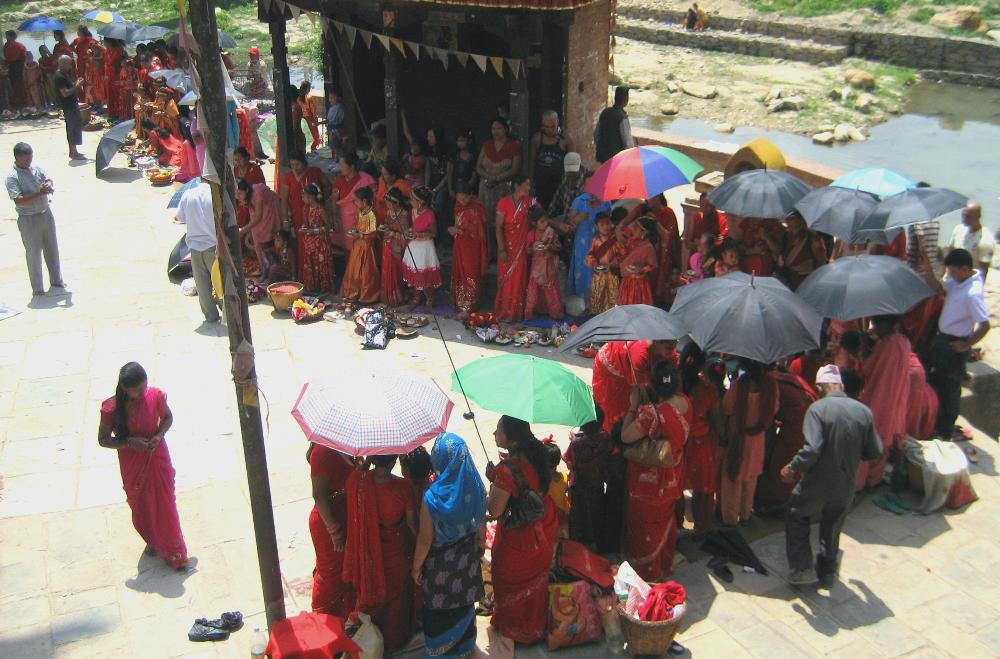
| The temple town of Panauti is untouristed and serene. The wedding ceremony took place near the two white-topped temples. |
| This lovely temple sits at the edge of steps leading down to the river. Water levels were very low in May (pre-monsoon). |
| Panauti's largest and most famous temple is Indreshwar Mahadev. Its propitious location between two important rivers makes it an important pilgrimage site for Hindus. |
| Each girl holds an offering plate which she presents at a temple dedicated to Vishnu |
| This little one isn't getting married yet but her sister is. She clings to her mom's leg at the odd sight of us -- we were the only Westerners present. |
| Here is her sister decked out in her wedding finery. We met her and her family through our guide, a teenager who is part of the same family. |
| We don't have many pictures from Dhulikel because the only real reason for tourists to go there is for the views of the Himalaya range, which were nonexistent due to the clouds and haze. Still, we dutifully hiked to Kali Temple at the top of the hill and saw -- nothing. Good morning exercise though! |
| At the base of the stairs in Dhulikel was this decorative tile showing two feet. It seemed like a fitting end to our last hike in Nepal. |
| We watched the village priest make offerings at the wedding ceremony. He lit a small fire then threw rice into the flames as he chanted from a book. |
| Young girls line up around the square, ready to make their offering. Moms hold umbrellas to ward off the sun. |
| Young girls await their marriage to Vishnu. The wedding ceremony takes place over two days. |
| Panauti & Dhulikel, Nepal |
In the town of Panauti southwest of Kathmandu
we witnessed what was undoubtedly the most
unusual wedding ceremony we'll ever see. The
participants were all girls between the ages of
4 and 11. Dressed in elegant red and gold
gowns, they were decked out in glitzy jewelry
and wore eyeliner and makeup. It turns out we
had stumbled upon an annual ceremony of
great importance to the local Newari people.
As we watched from a balcony window, a local
man kindly explained what we were seeing. He
told us that each and every Newari girl gets
married three times in her life. First she weds
the sun. Before this ceremony can take place,
the girl must spend seven days in a dark room
with limited facilities (the older tradition used
to call for 21 days). Her second wedding (the
one we were witnessing) is to the Hindu god
Vishnu. The girl “marries” a piece of fruit
carried in her hands that is representative of
the god. Her third wedding is to a human male.
We were told Newari girls cannot marry a man if
they haven't performed the first two wedding
ceremonies, so virtually every Newari girl takes
part. The first two weddings happen only once
in a girl's life, and they must take place before
she gets her first period.
we witnessed what was undoubtedly the most
unusual wedding ceremony we'll ever see. The
participants were all girls between the ages of
4 and 11. Dressed in elegant red and gold
gowns, they were decked out in glitzy jewelry
and wore eyeliner and makeup. It turns out we
had stumbled upon an annual ceremony of
great importance to the local Newari people.
As we watched from a balcony window, a local
man kindly explained what we were seeing. He
told us that each and every Newari girl gets
married three times in her life. First she weds
the sun. Before this ceremony can take place,
the girl must spend seven days in a dark room
with limited facilities (the older tradition used
to call for 21 days). Her second wedding (the
one we were witnessing) is to the Hindu god
Vishnu. The girl “marries” a piece of fruit
carried in her hands that is representative of
the god. Her third wedding is to a human male.
We were told Newari girls cannot marry a man if
they haven't performed the first two wedding
ceremonies, so virtually every Newari girl takes
part. The first two weddings happen only once
in a girl's life, and they must take place before
she gets her first period.
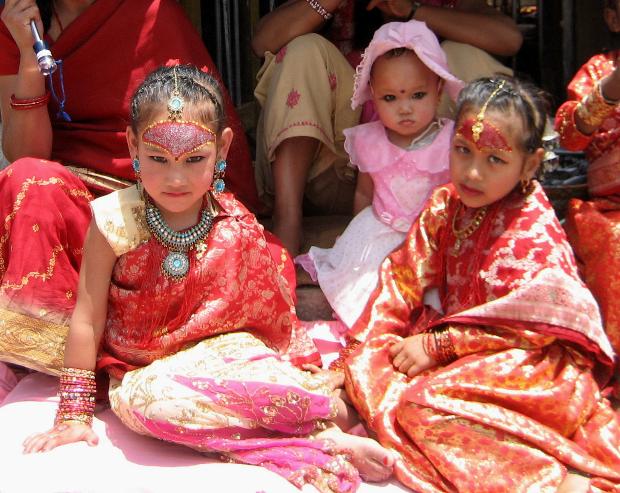
| The wedding ceremony to Vishnu has been an important part of Newari culture for over 1000 years |
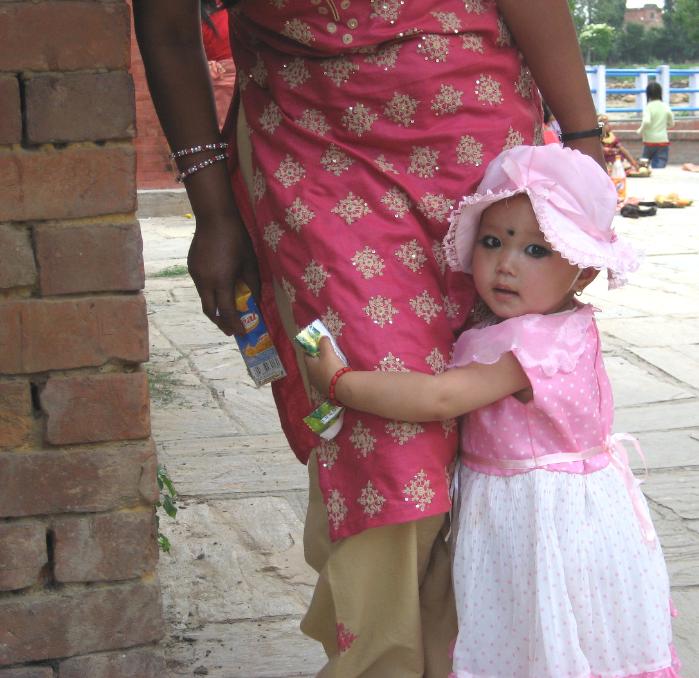
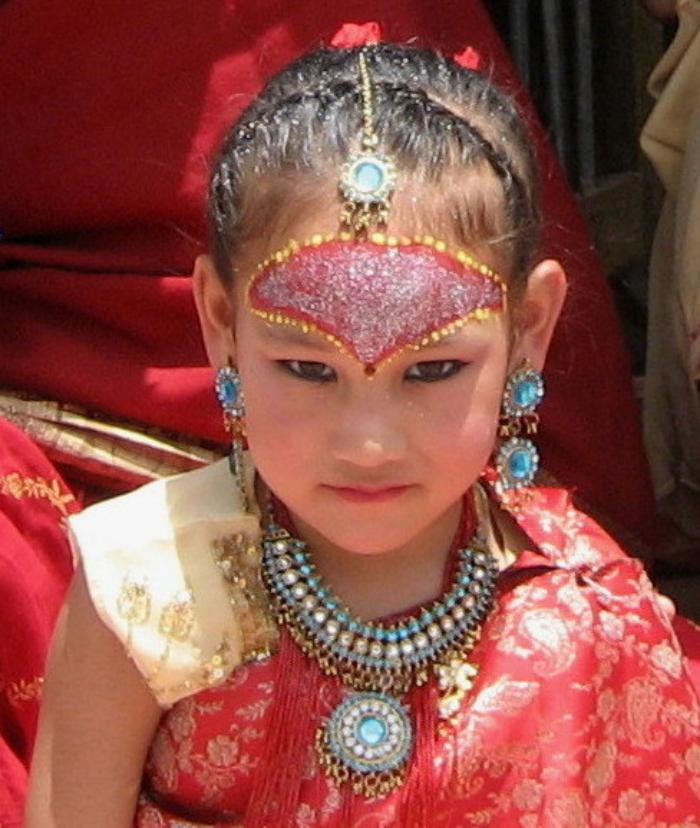
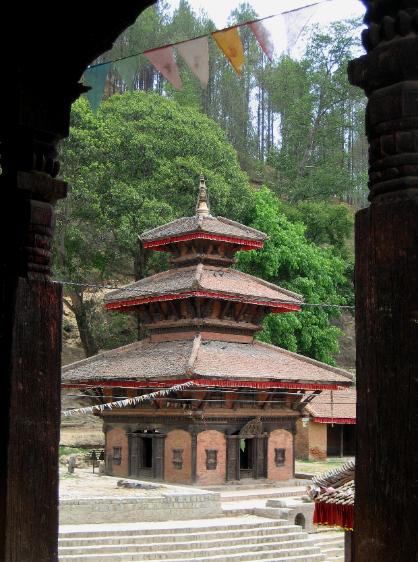
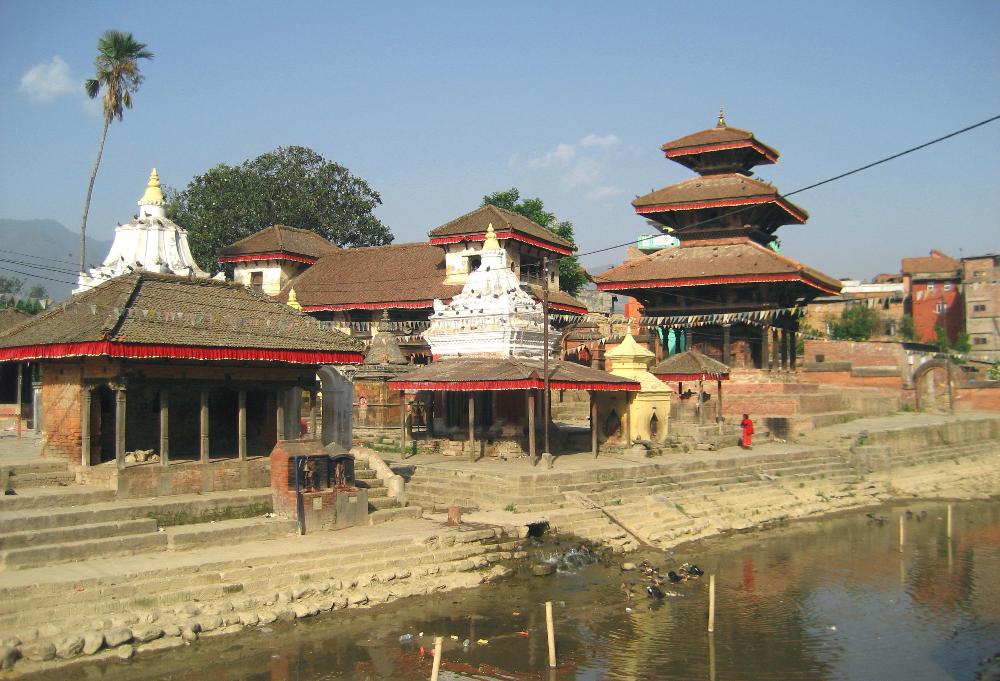
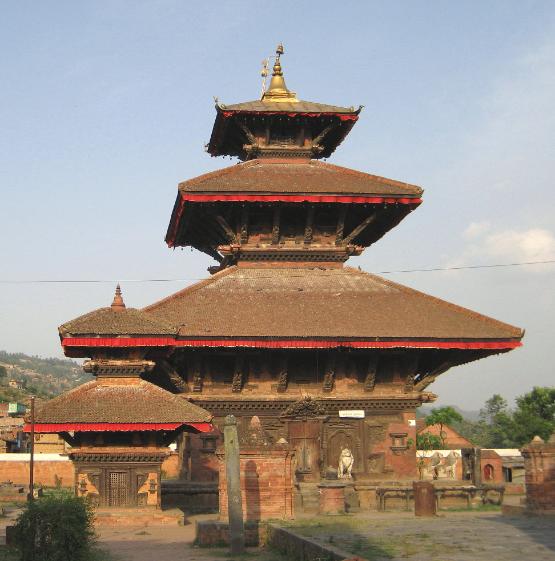
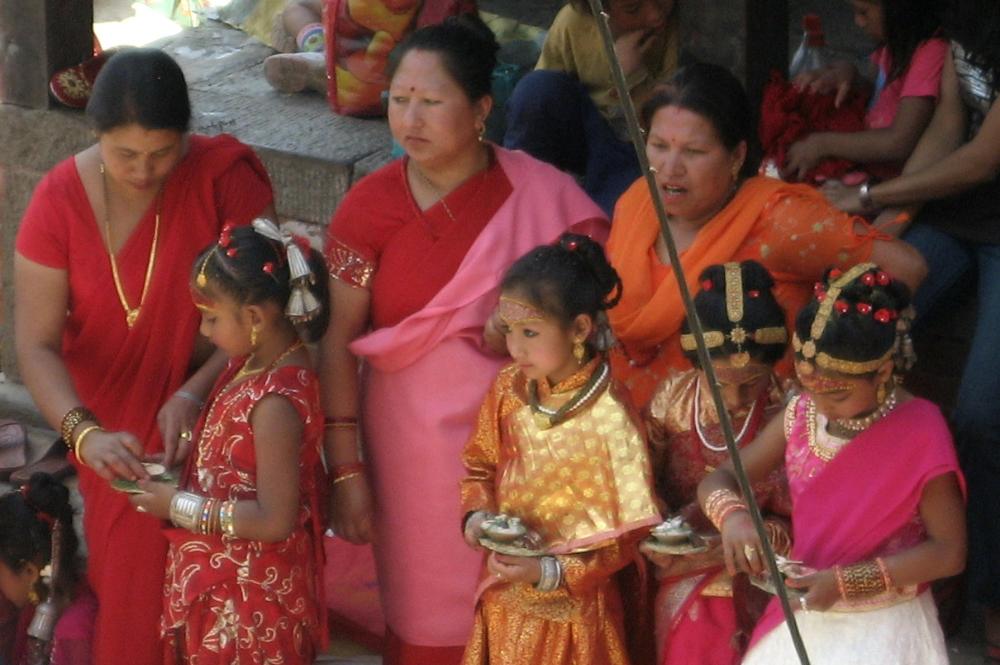

| It was by sheer chance we happened to arrive in Panauti during an important festival day -- but we're glad we got to experience this |
